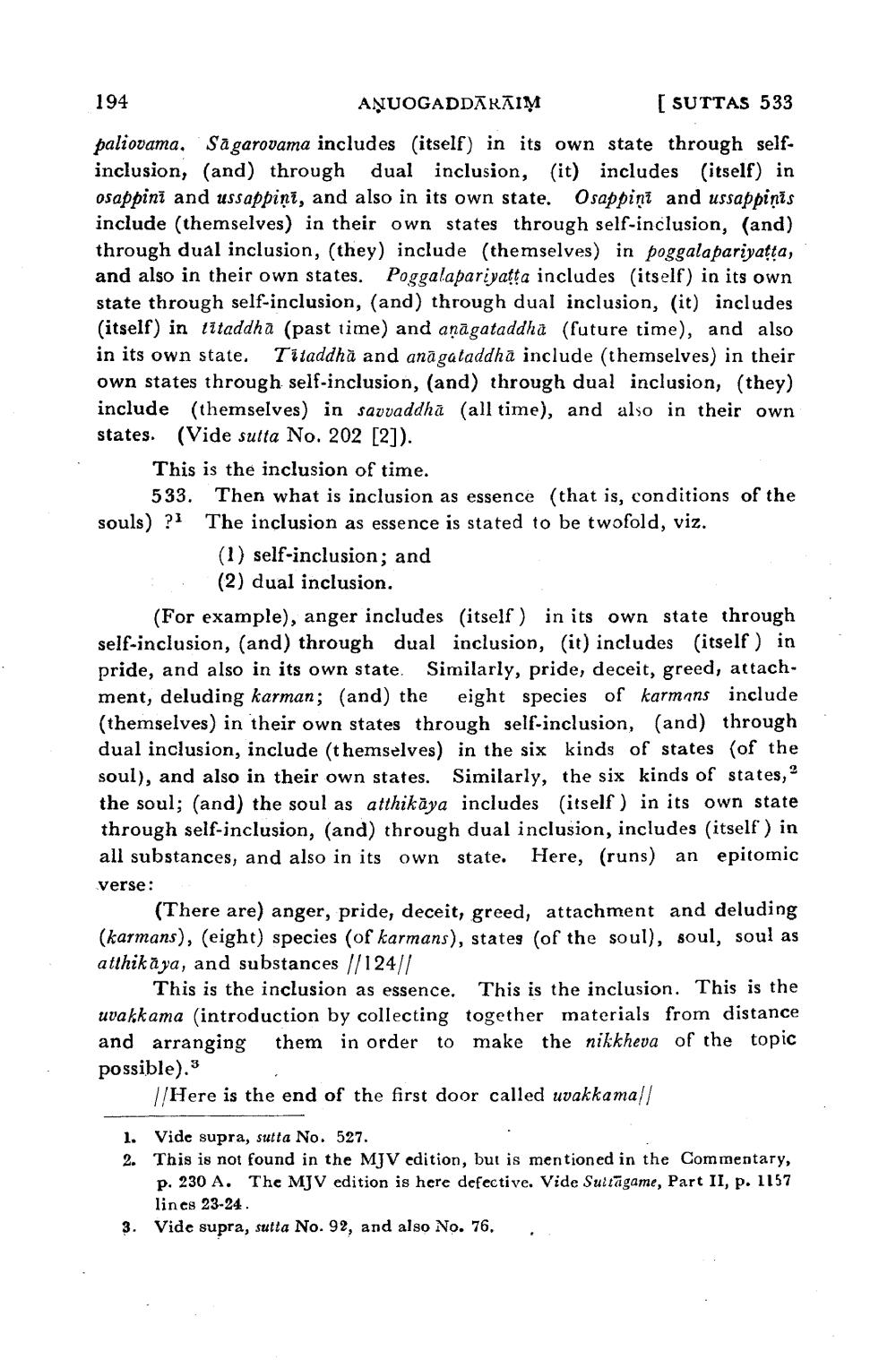________________
194
AŅUOGADDARAIM
[ SUTTAS 533
paliovama. Sāgarovama includes (itself) in its own state through selfinclusion, (and) through dual inclusion, (it) includes (itself) in osappini and ussappini, and also in its own state. Osappini and ussappiņis include (themselves) in their own states through self-inclusion, (and) through dual inclusion, (they) include (themselves) in poggalapariyaṭṭa, and also in their own states. Poggalapariyaṭṭa includes (itself) in its own state through self-inclusion, (and) through dual inclusion, (it) includes (itself) in titaddha (past time) and aṇāgataddha (future time), and also in its own state. Titaddha and anāgataddhā include (themselves) in their own states through self-inclusion, (and) through dual inclusion, (they) include (themselves) in savvaddha (all time), and also in their own (Vide sutta No. 202 [2]).
states.
This is the inclusion of time.
Then what is inclusion as essence (that is, conditions of the The inclusion as essence is stated to be twofold, viz.
533. souls) ?1
(1) self-inclusion; and
(2) dual inclusion.
(For example), anger includes (itself) in its own state through self-inclusion, (and) through dual inclusion, (it) includes (itself) in pride, and also in its own state. Similarly, pride, deceit, greed, attachment, deluding karman; (and) the eight species of karmans include (themselves) in their own states through self-inclusion, (and) through dual inclusion, include (themselves) in the six kinds of states (of the soul), and also in their own states. Similarly, the six kinds of states, the soul; (and) the soul as atthikaya includes (itself) in its own state through self-inclusion, (and) through dual inclusion, includes (itself) in all substances, and also in its own state. Here, (runs) an epitomic
verse:
3.
(There are) anger, pride, deceit, greed, attachment and deluding (karmans), (eight) species (of karmans), states (of the soul), soul, soul as atthikaya, and substances //124//
This is the inclusion as essence. This is the inclusion. This is the uvakkama (introduction by collecting together materials from distance and arranging them in order to make the nikkheva of the topic possible).3
//Here is the end of the first door called uvakkama||
1. Vide supra, sutta No. 527.
2. This is not found in the MJV edition, but is mentioned in the Commentary,
p. 230 A. The MJV edition is here defective. Vide Sultagame, Part II, p. 1157 lines 23-24.
Vide supra, sutta No. 92, and also No. 76,




